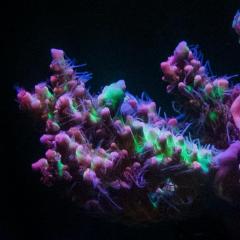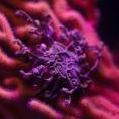-
Similar Content
-
Topics
-
Latest Update
-
1
-
1
Chaeto to Give Away - Postal Code 391030
Chaeto to give away... Will throw by 24 Nov 2000hrs. -
0
Clearing Space - Selling RBTA
Clearing RBTA to reduce bio load. $4 per piece. Self-collect only at 30 Cassia Crescent -
0
LF bird nest coral
Anyone selling bird nest coral? Preferably in the west. Can send me pics thanks -
0
WTS Items
Selling the following Items due to upgrading to new Redsea Reefer 250 Tank. Redsea Max Nano Peninsula Complete System includes Reef safe ReefLED 50 Lighting, Pump provides 950 l/h(240gph), Rear Sump & Automatic Top-Off unit with a 1.5 liter reservoir, Redsea Aquarium Net Cover, Max Nano Filter Bag 100 micron (1 pcs New), Marco Rockscape, 2 X AF Rockscape. Tank dimension: Display tank length : 45 cm, height : 45 cm, width : 58.5 cm. Total system height : 132 cm, Total system water vol. : 100 L, Display tank water vol. : 87L, Ultra-clear Front & Side glass : 8mm, Bottom glass : 10mm - Letting go @ $780. Hailea HK-150A Chiller, 1/10hp - Letting go @ $250. Eheim 12/16mm Hose (3m Length)- Brand New and keep as spare- Letting go @ $12. Vortech MP10QD - Letting go @ $380. Anemone Guard (Compatible for Vortech MP10) - Letting go @ $20. Jebao Wifi Doser MD 4.4 - Letting go @ $60. Dosing Tube (4m Length) - Brand New and keep as spare - Letting go @ $10. Acrylic Dosing Tube Holder - Letting go @ $10. DD Compact ATO Unit - Letting go @ $70. Acrylic Reservoir 5litres - Letting go @ $50. Tunze Magnet Care Nano 0220.010 - Letting go @ $12. Redsea Complete 4-part Supplement Program - Brand New and keep as spare - Letting go @ $95. Redsea Dosing Tube (4 ea) - Brand New and keep as spare - Letting go @ $25. Salifert (KH) Test Kit - Expiry Date: 03/2028 - Letting go @ $16. Salifert (CA) Test Kit - Expiry Date: 03/2028 - Letting go @ $28. API Ammonia NH3/NH4 Test Kit - Expiry Date: 07/2027 - Letting go @ $14. Fauna Marin Min S - Liquid Coral Food (1000ml) - Expiry Date: 04/2026 - 90% Balance - Letting go @ $70. Flipper Platinum Scraper - Letting go @ $18. All items are bought in-between 2023-2024, Interested, please PM me. *All items is ready for self collection and arrange for your own transportation. Location: Jurong.
-








Recommended Posts
Join the conversation
You can post now and register later. If you have an account, sign in now to post with your account.